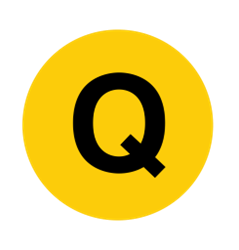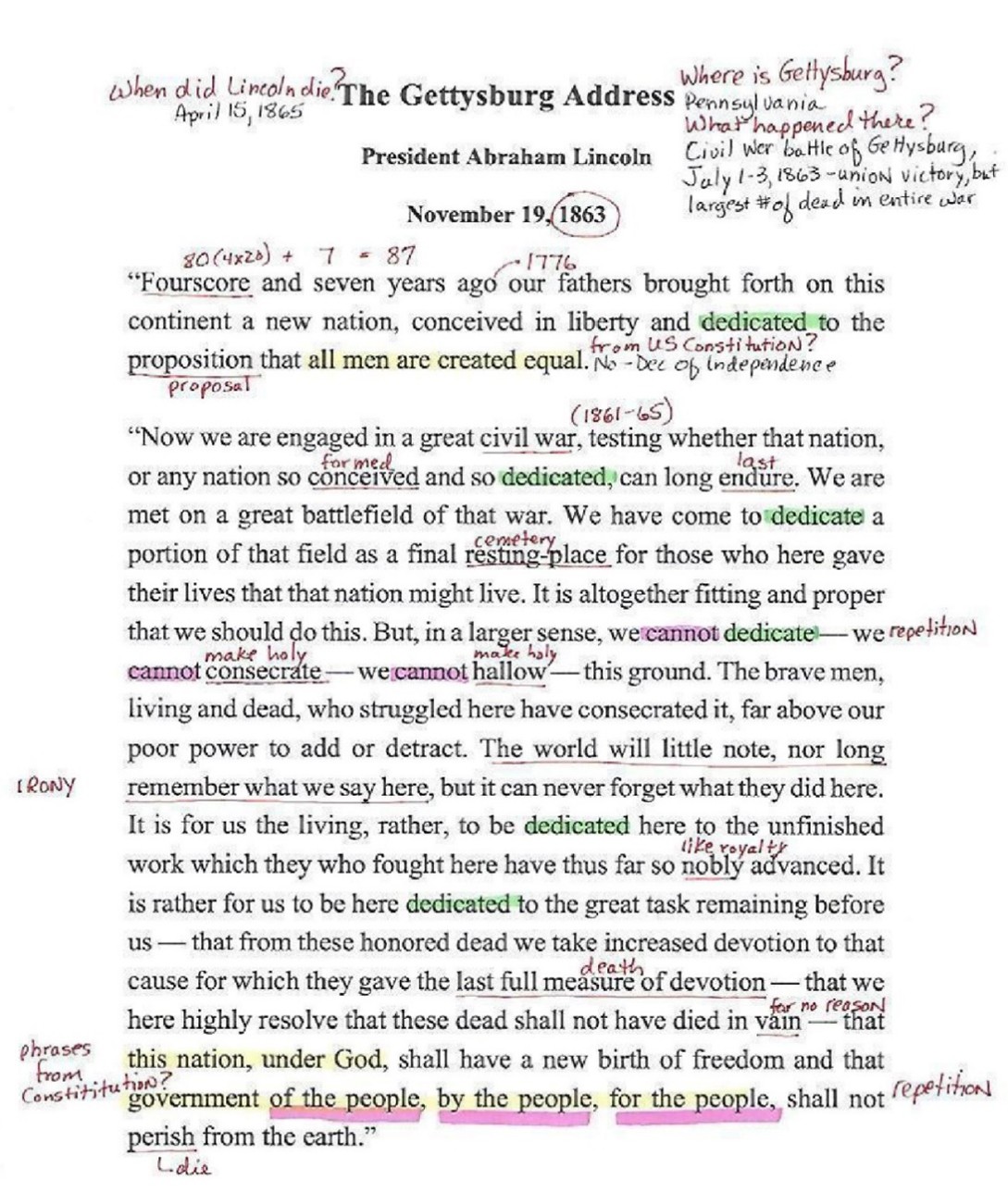Chapter 1.1 What Are Active Reading Skills and Strategies?
 What makes someone a “good” reader? Are there ways you can become a better reader? Reading is a skill that you can practice and improve. There are several different strategies you can use to become a better reader by increasing your reading comprehension. Effective reading strategies include “active reading,” annotating and summarizing.
What makes someone a “good” reader? Are there ways you can become a better reader? Reading is a skill that you can practice and improve. There are several different strategies you can use to become a better reader by increasing your reading comprehension. Effective reading strategies include “active reading,” annotating and summarizing.
What does “active reading” mean?
Active reading means purposefully interacting with the text. It involves activities such as highlighting key points, taking notes, asking questions, summarizing, reorganizing information, and reflecting. Active reading is especially helpful for academic studies, research, and professional development, as it promotes deeper understanding and greater retention. Active reading is the opposite of passive reading, which is what we sometimes do when we skim over words without much thought or intention.
SQ4R
SQ4R is a reading strategy you can use when you have an article, essay, or chapter to read for a class, and you really want to comprehend it. It can be used to approach difficult or long readings. It can also be used when you need to read quickly to gain an understanding of a reading in a hurry.
If you must read a difficult, long, or boring text, it can be extremely helpful to have a strategy or a plan for how you are going to approach the reading. SQ4R is a great approach to learn and practice the next time you have to complete a reading that is difficult to finish. So, what is SQ4R and how do you do it? SQ4R is an acronym, which means each letter or number represents a step in the process. Follow along below to learn what each step of the process entails.

S = Survey or Skim
When you’re assigned a new reading, you should survey or skim the entire reading before you begin. Look for topics, key words, and any summaries.
Why would it be helpful to skim the reading before you read? Doesn’t that just waste more time?
Knowing what you are going to read, how long it is, what type of information you are going to encounter, and what subheadings or subsections you need to understand can be very helpful and allow you to take some shortcuts while still increasing your understanding. Surveying a reading first should take only about 1 minute, and it really does prep your brain for what you want it to learn.
When you survey the reading, it gives your mind a purpose, so you are less likely to be distracted as you read.

Q = Question
As you skim the text, try to become curious about it by asking yourself some questions about it before you begin reading.
Asking yourself questions about the text before you get started reading will provide you with an additional purpose for reading: to get the answers to those questions. Your brain will be more likely to work for you instead of getting distracted.
Not sure what questions to ask yourself? Sometimes the author will have some at the end of a chapter. Other times, your teacher may provide some questions. The easiest way to come up with guiding questions is to turn the titles, headings, subheadings, and bold words from the text into questions using who, what, why, how, or when. If all else fails, ask yourself, “What is the point of this reading?”
Remember, these first 2 steps (Survey and Question) happen together and are really a quick little investment to get more out of your reading.

R = Read
In this step, you will read the text. Focus on reading in chunks, or manageable sections.
Pace yourself.
For complex materials such as textbook chapters, newspaper articles or research articles, this may mean reading a paragraph or two with its own heading.
If you are reading a short story or novel, you will find that you can read longer sections at a time.
R = Record
Take explanatory notes on the important information that was read. Briefly record definitions, details, and facts using single words or short phrases. This can be done using annotations on the text.
R = Recite
As you read each chunk stop periodically to recite your notes by reading them out loud.
Have you ever read something, and when you got to the end, you realized that you were not so sure what the reading was all about? Reciting helps prevent this. If you can say or write what something is about in your own words, that is a good sign that you understand the author’s points, and it is okay to go on to read the next section.
R = Review
After you read the entire work or a large section, you should review what you read by answering those questions you came up with and explaining the answers to them. If you cannot answer the questions, go back to your notes or reread the section to get the answer to the questions that were posed during the Q step of SQ4R.
Annotation
Annotation is the practice of adding notes directly to a text. While it is a method of notetaking, it is also a reading strategy because it can improve your comprehension, particularly complex readings. This will be explained further in the “Note Taking Systems” section.
When you need a deep understanding of reading, perhaps to write an essay or pass a test, annotation is an effective approach.
Figure 1.7. Annotations may include highlighting important concepts, defining terms, writing questions, underlining or circling key terms, or otherwise marking a text for future reference.

Why Annotate?
1. To Read More Actively
- Annotating forces you to stay focused and engaged in the reading and to process the material instead of reading passively.
2. To Enhance Understanding.
- Annotating helps break down complex ideas and thus builds comprehension.
3. To Facilitate Critical Thinking
- Annotating encourages you to ask questions, draw connections, and analyze the author’s points.
4. To Improve Retention
- Writing notes in your own words and marking key points make the material more memorable. This helps with reviewing and preparing for exams.
Steps for Effective Annotating
1. Preview the Text
- Skim headings, subheadings, summaries, and introductions to get an overview of what it is going to be about. It’s important to become familiar with the reading BEFORE you start marking it.
2. Use Tools
- Use highlighters, pens, or digital annotation tools. Assign different colors for specific purposes (e.g., key ideas, unfamiliar terms, important examples). We want our notes to stand out so that we can find them later, and so they can help us review.
3. Highlight Key Information
- Mark main ideas, thesis statements, and essential arguments. Avoid over-highlighting; focus on critical points.
4. Write Notes in the Margins
- Summarize ideas in your own words. Pose questions or note areas of confusion. Record connections to other readings or personal experiences.
5. Use a System of Symbols That Works for You
- Symbols allow you to see important ideas at a glance without rereading or searching. Underline or circle key terms important to understanding the text. Use symbols as a shorthand. For example, confusing points may be marked with ❓; key points with ✳; and surprising facts with ❗. Check off or number steps to a process with ✅. Identify ideas you love with 🤍, sections you don’t need with ❌, and arrows to show relationships between ideas ➡, ⬆, ⬇, ↔.
6. Annotating Digital Text or an E-Textbook
- Save the document as a PDF. Then, use features in PDFs, online textbooks, and apps like OneNote or LiquidText to add highlights, comments, and notes
7. Reflect and Review.
- After finishing the reading, revisit annotations and write a brief summary of the text or its sections to reinforce understanding. Use annotations to prepare for class discussions, essays, or exams. What you have to remember while you are annotating, especially if you are going to annotate multiple types, is to not overdo whatever method(s) you use. Be neat about it – its organization needs to make sense when you revisit the material later.
Summary
A summary is a shortened, paraphrased version of the original text.
When using SQ4R and when annotating, you learned to “sum up” as you read, briefly restating each section in our own words. This is the basic idea of summarizing.

Writing a summary is like making a big pot of soup and boiling it down until only the main elements are left. The meat, potatoes and vegetables are still there, but all of the extra liquid is gone. If a passage is summarized correctly, it should be about 25% of the original source.
Why Summarize?
- To condense long texts into manageable pieces for studying
- To enhance understanding of the key points
- To prepare for discussions, essays, and exams
- To share information with others accurately and clearly
Steps for Writing a One-Paragraph Summary
- Read the text at least twice before starting your summary paragraph. You need to understand it to summarize it well.
- Be sure to clarify any unknown vocabulary so that you can put it in your own words.
- Identify the original author and let your reader know what you are summarizing and where it came from. Be sure to include:
-
- name of the author
- title of the text
- publisher
- main point of the text
- Follow up with a brief explanation of each of the author’s main ideas and necessary major details. If summarizing a story, include the key events.
- Finish with a sentence that sums up the work in an original way.
- Check your work:
-
- Did you write in 3rd person (no “I” or “you”) and in present tense?
- Did you explain the author’s main ideas and key major supporting details?
- Did you leave your opinion out of it?
- Is it clear, accurate, and concise?
- Did you use your own words, and leave your opinion out?
Reminders
- Pretend you are writing the summary to someone who has never even heard of the original text. Your summary needs to be clear and detailed enough for someone to feel as if they understand the original without reading it.
- Use your own words.
- Write objectively; leave your opinion out of it.
- Your summary should follow roughly the same order as the original.
- A summary is never more than 1/2 the length of the original.
- Don’t use direct quotes in a summary. (That will not help shorten the text or put it in your own words.)
Here is a summary of the active reading skills and strategies
Active reading is an intentional, engaging approach to reading that enhances comprehension and retention. It contrasts with passive reading, where the reader skims without much thought. To become a better reader, various strategies can be used to strengthen understanding.
SQ4R is an effective active reading technique, which stands for:
- Survey: Skim the text to identify main topics and key terms.
- Question: Ask questions about the material to guide your reading.
- Read: Read the text in manageable chunks.
- Record: Take explanatory notes on the important information that was read.
- Recite: Summarize each section in your own words to reinforce understanding.
- Review: Go over the entire text or sections to check for comprehension and retention.
Annotation is another active reading method where readers mark and take notes directly on the text. It improves comprehension, critical thinking, and retention by encouraging interaction with the material. Steps for effective annotation include
-
- Preview the text, then use tools like highlighters or symbols to mark key ideas.
- Write notes in the margins, summarize points, and ask questions.
- Reflect and review your annotations to prepare for discussions or exams.
Summarizing is the final strategy, which involves condensing a text’s main ideas into a shorter version. This helps in studying, preparing for discussions, or clarifying complex texts. A summary should be concise, written in third person, and free of personal opinions
By combining strategies like SQ3R, annotation, and summarization, readers can engage more deeply with the text and improve their reading efficiency.
Attribution
Strengthening Reading and Comprehension by Audrey Cross and Katherine Sorenson is licensed under CC BY-NC 4.0
Reading and Notetaking Strategies by Forrest Lane and Heather F. Adair is licensed under a CC BY 4.0. Content on this page includes adapted material from: Reading and Notetaking: Summary and Reading and Notetaking: Rethinking by Amy Baldwin also licensed under a CC BY 4.0.
Media Attributions
- Photo of Book and Coffee © Priscilla Du Preez on Unsplash.
- S
- Q
- R
- Gettysburg Annotation
- Photo of Meat and Potatoes
